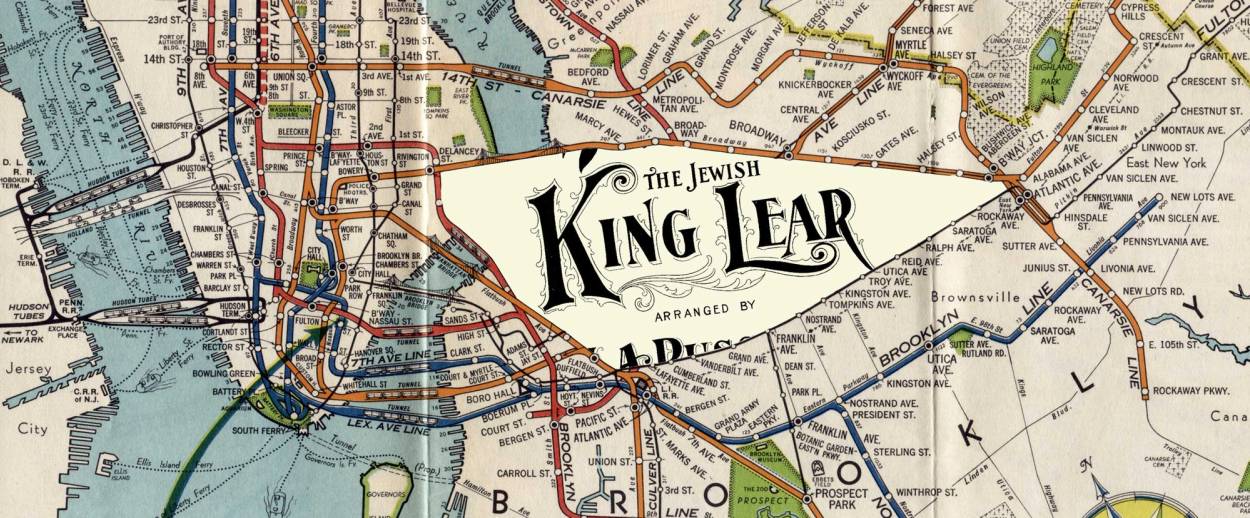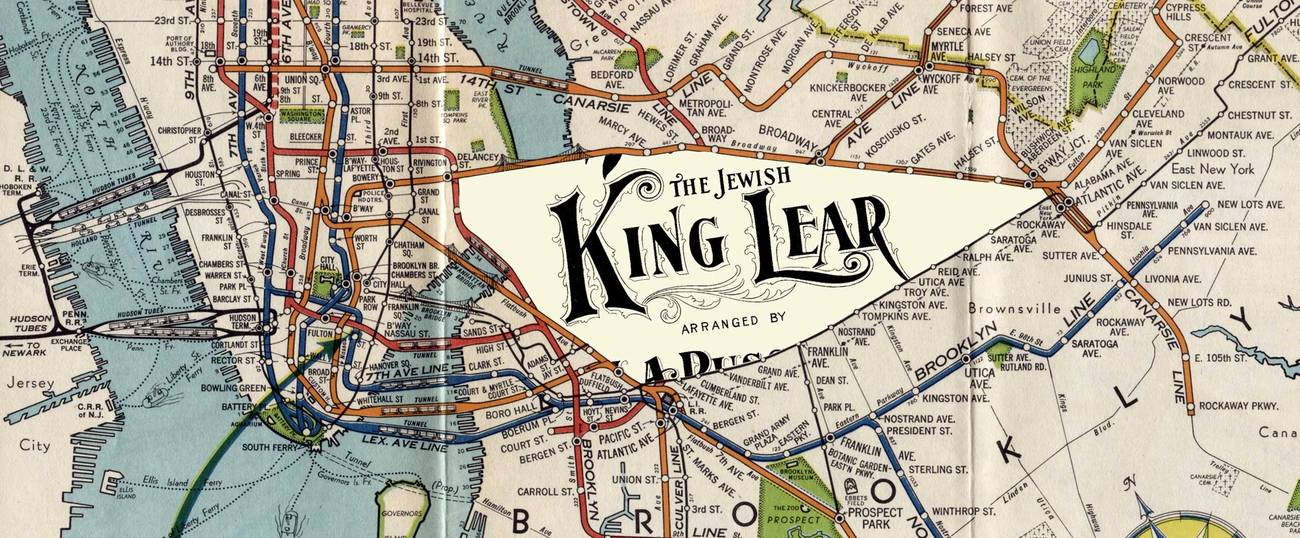Shalokhmones for Hitler and Dueling King Lears
Rokhl’s Golden City: Shakespeare reinvented, Klezmer reimagined, and Yiddish Nobels reframed for Canadian heroes




I’ve wanted to be like Anna Shternshis pretty much since we met, back in the last century. Anna, barely a year or two year older than I, was teaching at the Oxford Yiddish Summer Institute. And I, a farbrente 22-year-old Yiddishist, was a student in the program. With her big dark eyes and pixie cut, Anna looked like a younger, Yiddish-er Liza Minelli and was working toward her D.Phil in Yiddish at Oxford. Why wouldn’t I want to be like her?
For about five memorable minutes Oxford offered a one-year teaching certificate in Yiddish, something I desperately wanted to do. Before I could even send in my application the program was canceled and yadda yadda yadda here we are. Anna is a beloved Jewish studies professor at the University of Toronto and I’m practicing backroom Yiddish cultural criticism sans certificate. Azoy geyt es (that’s how it goes).
As if that weren’t enough, Anna’s just released a groundbreaking musical collaboration with Psoy Korolenko titled Yiddish Glory: the Lost Songs of World War II. Based on ethnographic work done during WWII then lost in an archive when the collectors themselves were purged by Stalin, Yiddish Glory is both time capsule and cultural treasure. With titles like “Mayn Pulemyot” (My Machine Gun) and “Shalakhmones Hitlern” (Purim Gifts for Hitler), the songs on Yiddish Glory “challenged the established wisdom of how Soviet Jews made sense of WWII. Many songs turned out to be the first grassroots testimonies of the German atrocities. Their authors used music and poetry to describe violence and destruction that could not be easily comprehended or described in prose.”
The materials for Yiddish Glory were collected by a group of ethnomusicologists led by Moishe Beregovsky. Beregovksy is perhaps best known for his Old Jewish Folk Music, material that he collected in the 1920s and ’30s. It’s hard to overstate the importance of Beregovsky’s work to the modern klezmer “revival.” For a musical tradition with precious few written sources, the material in Old Jewish Folk Music was indispensable and formed the core of the new klezmer repertoire.
Despite the amazing discoveries (and new compositions) that have since expanded that repertoire, Beregovsky’s influence continues to reverberate. Few on the scene today have done as much to shape the modern klezmer fidl sound as Klezmatics co-founder, Alicia Svigals. Next month she’ll be celebrating her first solo album in 20 years, a duo project with pianist Uli Geissendoerfer titled Beregovski Suite: Klezmer Reimagined.
The revival is dead, long live the klezmer reimagination!
Last column I reported that Theatre J in Washington, D.C., had opened its Yiddish Theatre Lab series with a reading of Jacob Gordin’s Jewish King Lear. Just as the column was going to press I learned that, in a Thomashevsky-esque turn of events, there would be dueling Yiddish Lears this season. “The Yiddish King Lear, written by Jacob Gordin (aka the Jewish Shakespeare), is without a doubt one of the most famous Yiddish plays of all time. Starring David Serero in the title role of King Lear, this unique play will be performed on Jan. 30 and Feb. 1 2018 at 8 p.m. at the Orensanz Foundation located in the heart of the Lower East Side, New York.”
As scholar Joel Berkowitz notes in his book Shakespeare on the American Yiddish Stage, as soon as Shakespeare appeared on the Yiddish stage, it quickly became an integral part of the scene. Jacob Gordin, author of the Jewish King Lear, “transformed the Yiddish theatre in many ways, including the manner of adapting Shakespeare.” Gordin, possibly the most important playwright working with Shakespeare’s texts, reworked Lear not once, but twice, with the Jewish King Lear and his Queen Lear, known as Mirele Efros. I can’t wait to see what Serero and his team do with this Yiddish Lear for 2018…
Last column I also announced the formation of the new Yiddish Singing Society. Since then the YSS has met twice and by all accounts, is off to a smashing start. I had coffee with my friend, trumpet player and rumble-voiced bass Jordan Hirsch and he couldn’t stop gushing about what a generous teacher the YSS has in Josh Waletzky. In the first two sessions Josh covered topics like embracing Yiddish vowels, the role of gender in traditional folk songs, and what makes traditional, unaccompanied group singing different than other kinds of contemporary music-making. If you’re interested at all in Yiddish singing, no matter your level, I highly recommend you make your way to Brooklyn on a Tuesday night.
And finally … two mazl tovs directed due north, toward Montreal. Klezkanada would be nothing without the tireless work of founders Hy and Sandy Goldman. Last month Hy and Sandy were awarded Meritorious Service Medals by the Governor General of Canada, Julie Payette. If I could give Hy and Sandy Yiddish Nobels I would. Over two decades they’ve built a truly international community that has empowered hundreds, if not thousands of Jews. Klezkanada attendees return to their communities transformed by their encounter with traditional Eastern European music, dance, literature, and folkways. In another bit of wonderful news, Klezkanada announced that my old friend Sebastian Schulman is joining Klezkanada as its new Executive Director. In addition to being a first-rate Yiddishist, he is a multilingual scholar with a gift for leadership, Seb is the kind of genius I would hate if I didn’t love him so much. Zol zayn mit hatslokhe, Sebik!
***
Listen: Yiddish Glory is no archival curiosity. Anna’s musical collaborators have done a brilliant job piecing together and in some cases inventing the music for the songs they found. You didn’t think Purim Gifts for Hitler could be a fun listen, did you? With a detailed booklet featuring lyrics in English and Russian.
Sing: Next meeting of the Yiddish Singing Society is Feb. 6, 7 p.m., 50 Rugby Road, Brooklyn
Watch: The Jewish King Learat Angel Orensanz, Jan. 30 and Feb. 1. If you can’t get to New York or D.C. you can buy classic Yiddish films at the National Center for Jewish Film website. I watched the film adaptation of Jacob Gordin’s Faustian melodrama God, Man and Devil this weekend and despite, the creakiness of it being an old-fashioned stage adaptation, I absolutely loved it. (Be warned the subtitles are not the greatest.) Gordin’s Mirele Efros is also available, and will still make you cry.
ALSO: This is truly a golden age of Yiddish learning, both in person and at a distance, from beginners to the most advanced. This year students have a rare opportunity to take online Yiddish language classes with Born To Kvetch author Michael Wex. He’ll be teaching the Advanced course, Thursdays between March and May. If you’re looking to introduce your kids to Yiddish, master teacher Paula Teitelbaum has been leading the Yo! It’s Yiddish series for families at the Eldridge Street Synagogue. The next session is Feb. 25. … I’ve mentioned before how important the Balkan music and dance scene was to the klezmer revival. That’s hardly a thing of the past, though. I just saw that accordionist Lauren Brody is taking part in Balkan Café Wednesdays and it sounds like a blast. Wear your dancing shoes. Next session Wednesday, Feb. 7, 7:15 p.m.-9:15 p.m., 455 West 56th Street, ground floor.
Rokhl Kafrissen is a New York-based cultural critic and playwright.